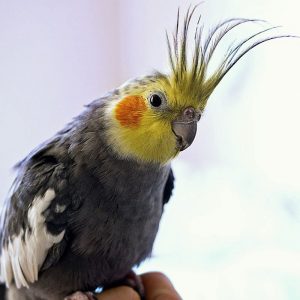
You know that offering a healthy and balanced diet to your bird contributes to your beloved friend living a long, happy, and fulfilling life. Seed alone simply is not enough for most parrots. It is deficient in many vitamins and minerals, like vitamin A and calcium. Seeds can also be deficient in certain proteins and have excessive fat. However, if your bird won’t eat the healthy food items you offer, then all those facts about bird nutrition and its role in health simply don’t matter. This is one reason many birds are still offered nutritionally unbalanced diets, and health problems occur as a result.
The adage “an ounce of prevention is worth a pound of cure” certainly applies to many health problems in birds when it comes to diet. It is of utmost importance that you get your pet bird to eat healthy food. This task may be a challenge for some birds, yet simple for others. Several tips and tricks can help get companion parrots transitioned from a seed-only diet onto a more varied diet that includes healthy pellets.
Mixing Old Food And New Food

One simple way to transition a bird onto a new diet is to mix the old food and the new food together at an initial percentage of 75% old to 25% new food. For this to succeed, offer your feathered buddy only the amount of food he or she needs for one day. This prevents your bird from picking through the food to eat only the old diet.
Expect your bird to eat all the parts of the food he or she likes first. As the day goes on and only the new pellets are left to eat, birds often start to investigate and become gradually more acquainted with the new food. Once your bird begins consuming some of the new food, the percentage that is the old food can start to be reduced and the new food portion can increase. Depending on your bird’s acceptance, this change in percentages of food offered can occur over several days to weeks until the final desired amount of new food is reached.
Feeding Times
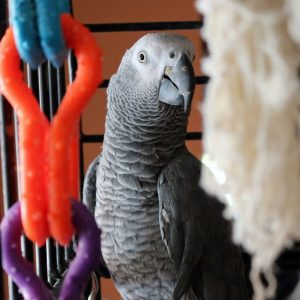
Another option to get parrots to eat pellets is to offer only the new food in the morning. Why? Because morning is a common time when birds like to eat. A bird who is hungry may be more willing to try something new. If your bird refuses to eat the new food, don’t offer the old food until midday for small species or until evening for larger species.
Smaller species need to eat more for their body size compared to larger species, so keep this fact in mind when working on the diet change with your bird.
Food Presentation
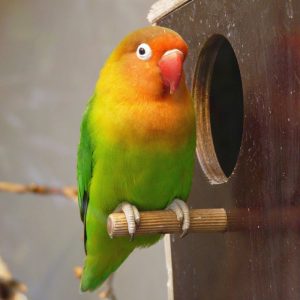
Understanding species needs and how they like their food presented to them can also be used to help a parrot transition from seeds to pellets. Small species who like to eat off the ground, such as budgerigars and cockatiels, can be offered a mixture of the old and new foods on a plate on the ground level of their cage to forage from. For birds that are not ground foragers, offering pellets in a different bowl higher up in the cage can provide a new exciting place to explore.
Presenting new foods in ways that stimulate a bird’s inquisitive nature can also help. Put pellets inside of a favorite fruit or veggie treat, outside the cage on play stands, or near a favorite perching spot. In addition, place food into toys that the bird must investigate. This is an entertaining way to introduce some larger species to a new food.
Social Interactions
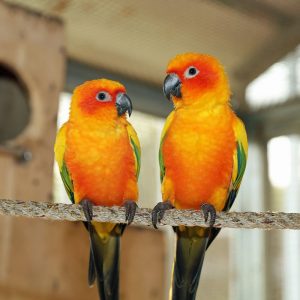
Parrots are naturally social. Another bird who already eats the food you want your bird transitioned to can help with the conversion process. Often, when a bird sees another individual eating a food, this prompts the parrot to also consume that food.
For single-parrot homes or those who are more interested in human companionship, you can fill this role. Interact with your bird and the new food item by picking it up, manipulating it, and eating it (or at least pretending to eat it). If you act excited and animated about eating this new food item, it can be even more enticing to your bird to try it out. Additionally, this serves as a nice way to bond with your bird!
Offering pellets as if though they are treats or rewards can be done as well and takes advantage of using a bird’s social nature to accept new food items from the person they love and trust.
Expert Help
You might choose to get help from someone else who has experience transitioning parrots onto a new diet. Some veterinary hospitals will board a bird for an average of 3 to 7 days and transition our beloved companions onto a new diet. This method also allows the bird to be monitored closely for any signs of weight loss or problems with the transition.
Additional Options To Convert Birds To Pellets

Other things that can help with transitioning your bird include crushing pellets and sprinkling them onto your bird’s current food or placing a thin layer of pellets on top of the usual diet. These tricks can get your bird to intentionally or accidentally try the new food.
Trying a different pellet size than what you may think your bird would like may also help. Some prefer smaller pellet sizes and others like bigger! Offering Avi-Cakes or Pellet-Berries are another great way to stimulate birds to try something new. The combination of seeds and other ingredients mixed with the pellets can get a parrot to pick at the new, healthy pellet option.
Lastly, you can try to moisten the pellets to change the texture. Be sure to remove moistened pellets after a couple hours, as they spoil if not eaten soon.
Words Of Wisdom
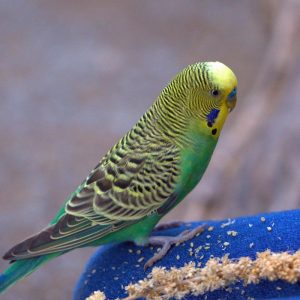
In order to ensure a smooth and safe dietary transition, do the following:
1) Monitor what your bird is consuming. Do not allow a small bird like a budgerigar to go for more than 12 hours without eating. Do not allow a larger bird like an African grey or larger to go for more than 24 hours without eating.
2) Monitor daily weights with a gram scale during a conversion, if your bird allows. This helps ensure your bird is not dropping weight, and he or she stays stable during the transition.
3) Observe how much stool is produced, its consistency and its color. This might alert you should problems arise during a diet transition. There should be a small amount of stool with each dropping, and the fecal component should never look black. If there are minimal or black feces in the droppings, a visit to the veterinarian is warranted.
Timing
A diet transition is different for each individual. Some parrots transition with ease while others prove to be difficult and may take some time. Go slowly if necessary, and stick to the goal of getting on a good diet. Giving up and giving in to your bird’s desire to be on a nutritionally unbalanced diet should not be allowed. Ultimately, sticking with and working toward a balanced diet that fits the needs of your bird at the life stage he or she is in goes a long way toward helping maintain a healthy and happy life.
